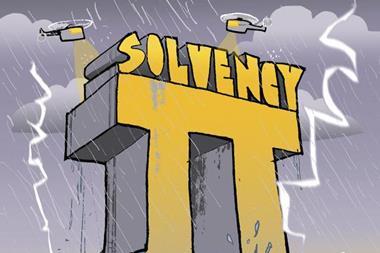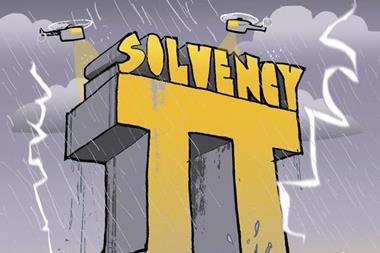Eiopa says QIS5 will be its last word on the regulation, but there are questions still to be answered
Europe's insurance regulator says QIS5 will be its last word on Solvency II before implementation, but there are questions still to be answered The European Insurance and Occupational Pensions Authority (Eiopa) issued its long-awaited report on the fifth quantitative impact study (QIS5) of Solvency II on 14 March.
Eiopa’s executive director-elect Carlos Montalvo told a press briefing shortly after the release that there will be no more impact studies before the implementation of Solvency II on 1 January 2013. “QIS5 is the last one. It is simply too late to undertake another full exercise before the implementation.”
But some market analysts are concerned that Montalvo's assertion may have been premature: they insist issues have arisen which need to be addressed before the implementation, including how capital charges will be calculated for groups and whether future premiums count towards the capital reserves companies need to show.
Insurance Times asked Towers Watson director and Solvency II expert Colin Murray what the key concerns are and how the industry should address them.
What are your initial feelings on the QIS5 report?
There are so many issues outstanding and the time to sort them out is running out fast. There is a fear out there that a lot of these issues won’t be sorted out in time for 1 January 2013.
What is the main issue that you feel needs to be addressed?
The group area is still not resolved. It’s quite interesting because the results show that the different methodologies used for consolidating group results gave fairly different results. At one stage they even reduced the surplus in groups by 43% compared to another methodology. I think that is a big area that needs to be sorted out.
What is the issue with calculations?
The complexity in the calculations isn’t always justified, especially the counter-party risk and the risk margins. Those were very significant calculations and in a lot of cases they ended up with a very small capital charge relative to some of the other risks.
How can the industry work to solve the issue?
Campaigning is needed for some of these things to be simplified. You shouldn’t have to go through all these calculations only to discover your exposure is relatively small compared to market and underwriting risks.
Why is Eiopa’s stance on expected profits in future premiums a concern for the industry?
The issue is whether future premiums count as capital and what kind of capital it is if it’s counted. If it’s Tier 1 capital, that’s very good and is no problem for the industry. But Eiopa is considering whether it should be Tier 3 capital, which means you can’t use it to cover anything. Eiopa is really saying: ‘You can’t fund a company with future profits. You need share capital, hard cash.’ The debate has gone back and forth between each of those, and I suspect they’ll settle on a compromise. I think that future profits will be allowed to be counted towards a certain proportion of Tier 1.
Is lobbying important on this issue?
I think it’s important that the industry engages to get real economic value. What happens is, if we don’t get the economic value, we’ll have inefficiencies in the industry where you have to borrow money to provide that economic capital and so on. And why, when we should be allowed to count at least some of the future profits capital?
Who can the industry lobby?
The industry needs to lobby its own insurance associations and governments. As well as the CEA [European insurance and reinsurance federation], which can lobby in Brussels. This needs lobbying at both local and European levels.
Equivalence is an issue that was not fully addressed. What are your views?
There are several countries which have been acknowledge by Eiopa that they are on track for equivalence, such as Bermuda. But the big elephant in the room that no one is discussing is the USA. The US doesn’t satisfy any of the rules for equivalence at the moment. I think leaving the USA out is like leaving out half the world and at some stage a political compromise will have to be made there. There has been mentioned that a transitional provision might be used while the regulators sort something out.
Hosted by comedian and actor Tom Allen, 34 Gold, 23 Silver and 22 Bronze awards were handed out across an amazing 34 categories recognising brilliance and innovation right across the breadth of UK general insurance.













































